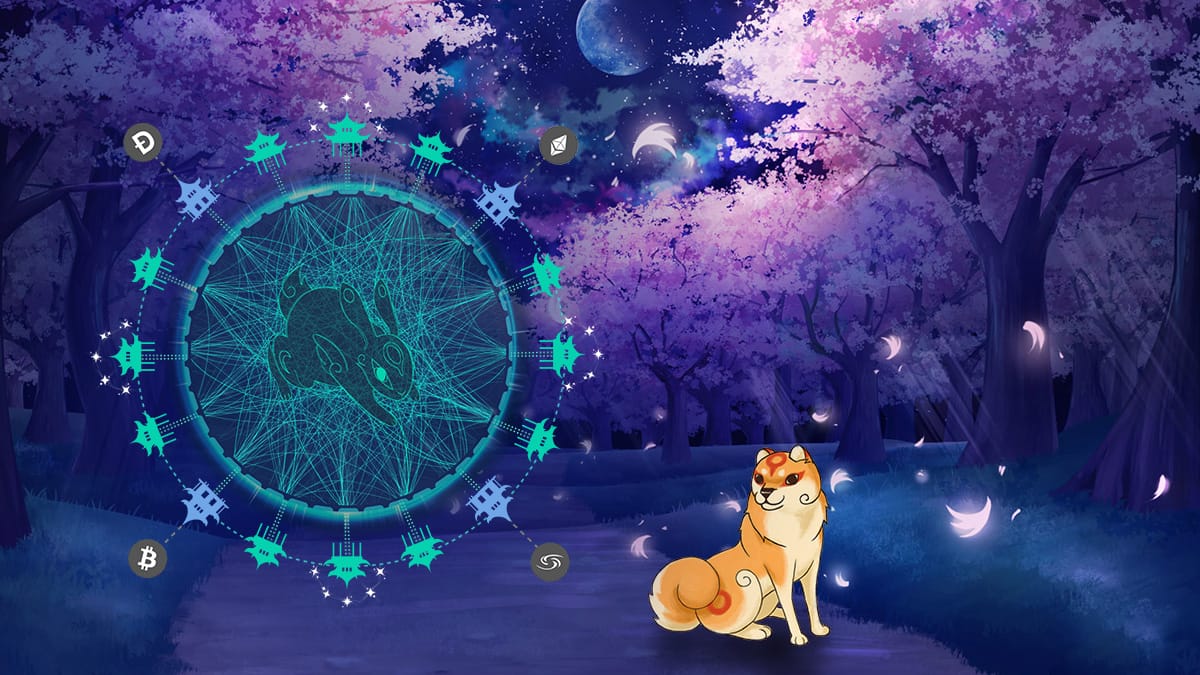Moon Rabbit Main-Net: Empowering Developers to Scale Innovation

This week in the crypto-space is marked with a string of events that shook the entire crypto-community: cessation of block production on one of the largest layer-1 blockchains is yet another occurrence contributing to the state of global market uncertainty.
With this in mind we would like to dive deeper into the nitty-gritty details of how Moon Rabbit Main-Net is poised to overcome the problems plaguing the web3 ecosystem, and how our developers reach far beyond the limits of other “legacy” networks.
To begin with, the Moon Rabbit network is composed of heterogeneous blockchain shards called “jurisdictions.” These jurisdictions create the next generation of the blockchain, offering full compatibility with EVM and the tools which come with being able to connect and operate with the entire Ethereum network. Moon Rabbit, being developer focused, has full cross-chain interoperability allowing developers to not only deploy their existing Ethereum-based dapps on Moon Rabbit but also give these developers and projects access to the benefits like on-chain governance, staking, and further cross chain integrations while paying a fraction of the transaction costs. The power and functionality of the Metachain with infinite scalability, this is Moon Rabbit.
What gives Moon Rabbit these incredible abilities? We can break this down into the main components of which the Moon Rabbit network consists: Mount Olympus, jurisdictions, and bridges. Mount Olympus is responsible for shared network security, consensus and cross-chain interoperability. Every Moon Rabbit jurisdiction shares the base characteristics of Mount Olympus through their connection to it. The Moon Rabbit ‘jurisdictions’ consist of independent blockchains with corresponding tokens and optimized functionality for specific use cases.
Mount Olympus is the substrate allowing unique blockchains to easily build on and craft niche or more overarching use cases. Mount Olympus is modular, adaptable, and customizable allowing for seamless plug and play modules for consensus gathering networking and finalization, forkless upgrades with transparent governance tools, the ability to continue enhancing your project over time without the risk of network disruption, and built in support for Moon Rabbit jurisdiction interaction right out of the box.
Bridges are sets of specialized blockchains that allow Moon Rabbit jurisdictions to connect to and interact with other networks. Bridges are one path for interoperability between all networks while jurisdictions ensure developers faster transactions, almost no gas fees, and first class blockchain security. This jurisdiction infrastructure allows for developers to build blockchains that keep individual user information private and by ‘rolling up’ many transactions before submitting to each individual platform ‘main-net’ Moon Rabbit creates a private and frictionless environment giving any project further scalability and interoperability.
Supporting all EVM based code and tools, Moon Rabbit makes it incredibly easy for developers to migrate their dapps to Moon Rabbit without any major changes to the existing code structure. Moon Rabbit is establishing itself as the go to place for developers to build and migrate their dapps to so they can tap into and take advantage of the emerging and growing cross-chain market along with the sheer scalability provided by Mount Olympus.
It’s also worth mentioning that Moon Rabbit is a product of the Substrate / Rust tech stack, where the Substrate component constitutes a collection of building blocks for creating blockchains and standard implementations of common abstractions. Using Moon Rabbit a developer can leverage highly complex substrate technologies like networking, logic, transaction que, web assembly interpreter, and implementation of tokenomics to develop a blockchain application in merely hours instead of months. Without substrate the process of building a blockchain would require a developer to be an expert in each individual area of blockchain development E.g. database, P2P network, block authoring, transaction handling, ect. However, the implementation of substrate on Moon Rabbit allows a developer to be an expert in just their specialized field which would make their chain unique.
The other important part of this Substrate / Rust tech stack is of course Rust itself. Rust is a multi-paradigm language with a focus on memory safety and first appeared in 2010 making it a relatively new language. The Rust compiler is very precise telling you in real time what is wrong with the code making it very difficult to make mistakes. This is incredibly important when it comes to developing in decentralized finance, and Moon Rabbit community will soon be tapping into the suite of the new-generation DeFi products built in accordance with the best industry practices.
To conclude, Moon Rabbit is a heterogeneous multi-chain model allowing for diverse, independent blockchains specialized for various purposes to work together under a unified security umbrella via jurisdictions. Building on a public blockchain like Etherum not only costs a large sum of money, but puts a limit on the flexibility and scalability the project can obtain. At the same time, launching a project on the Moon Rabbit chain allows for the utilization of each blockchain already tied into the Moon Rabbit ecosystem to create much faster development through cross-chain interactions.
As soon as you start building on Moon Rabbit you forge your own multichain world.
